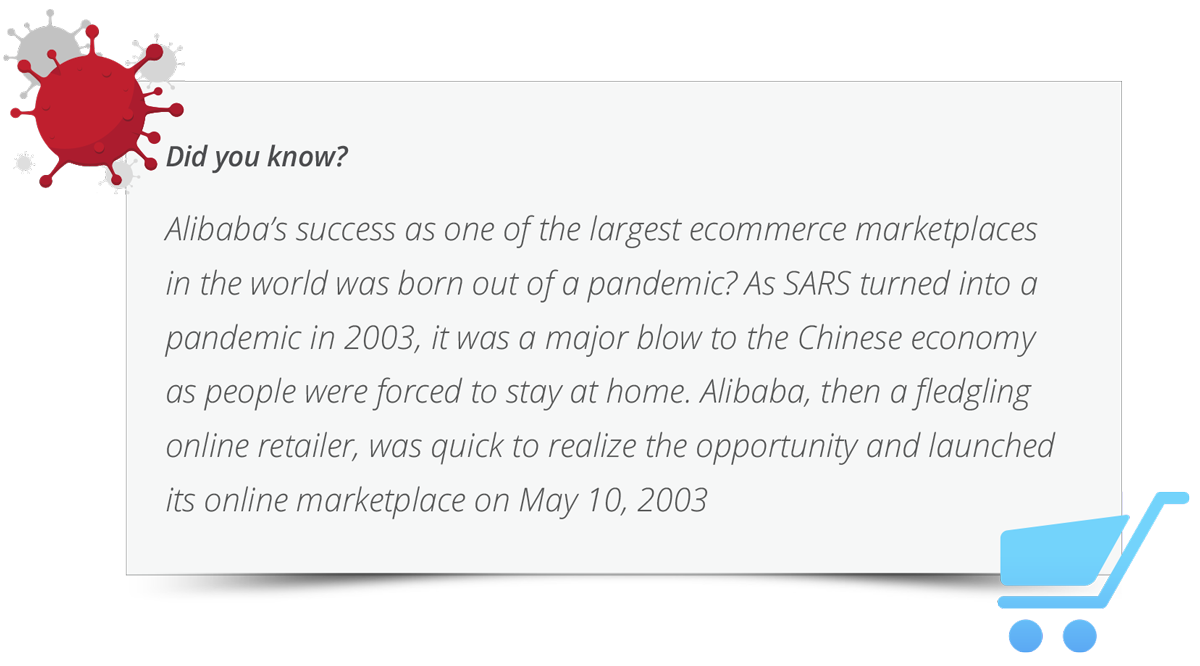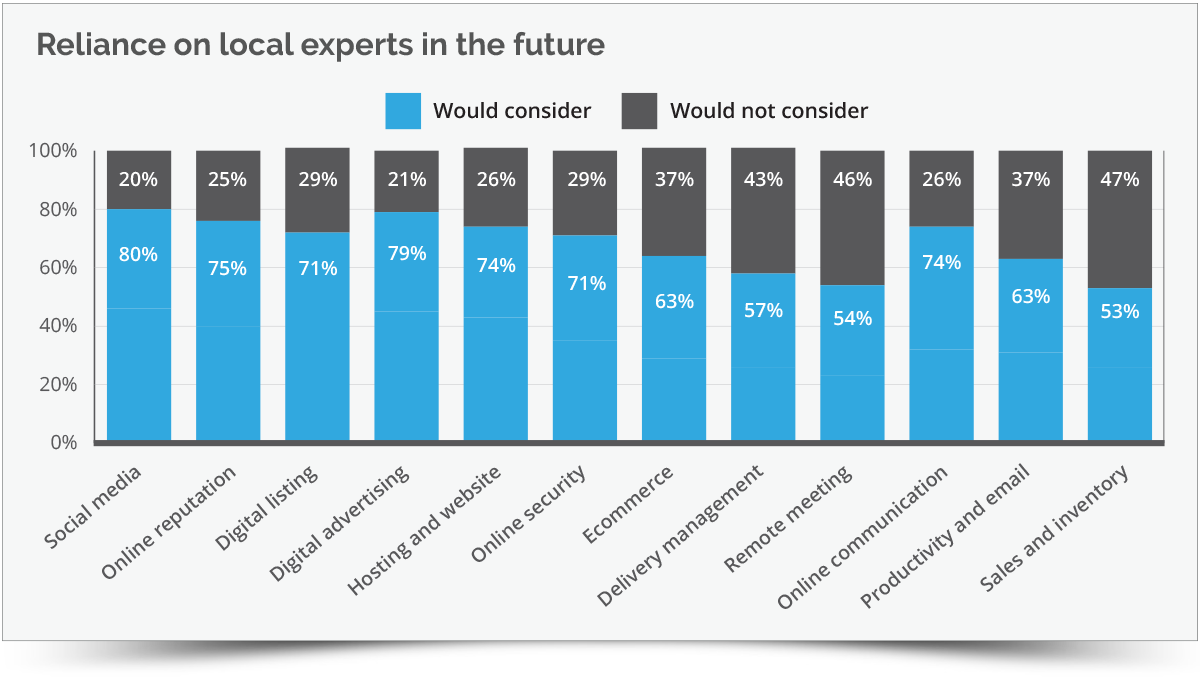What is Amara’s Law and How is it Relevant to Ecommerce
“We tend to overestimate the effect of technology in the short run, and underestimate the effect in the long run.” – Amara’s Law.
Roy Amara was an American researcher, scientist, futurist, and president of the Institute for the Future. While it is not exactly known when and where he made this statement, the belief is it may have been sometime in the 1960s or 1970s. For years, it has been a theory used to forecast the effects of a technology, including more recent artificial intelligence and blockchain.
“Amara’s Law has to do with how people think about the future, and the belief that the impact of technology increases at a consistent, linear rate over time,” says Vendasta CEO Brendan King. He was speaking at the company’s Conquer Local Connect virtual event in June.
“The reality is most technology-driven productivity starts slow, often being overestimated in the early stages. Many technologies are currently in this phase from artificial intelligence, nanotechnology to quantum computing – they are in early stages of development and their impact is being overestimated in the very short term. However, over time as technology evolves, people tend to underestimate the impact and overall importance, particularly in the long term,” he adds.
This is what happened with ecommerce. For the past 10 years, it grew at a steady but tepid pace. Then COVID-19 happened in 2020, leading to a sudden explosion in growth for ecommerce.
In the United States, ecommerce grew 32 percent in 2020 to reach $790 billion – that’s up from $598 billion in 2019. Ecommerce represented 14 percent of total retail spending in 2020, as compared to 11.3 percent in 2019, according to data from the US Department of Commerce.
Even outside the United States, ecommerce growth in 2020 rapidly climbed. Latin America stood out with 36.7 percent growth, despite suffering worse-than-average declines in overall retail sales (3.4 percent drop), followed by North America, Central & Eastern Europe, and Asia-Pacific.
“The rise of ecommerce has been rather slow and steady for well over a decade, but in 2020 COVID triggered a step function increase in demand as consumers and businesses were literally forced online,” says King.
“We have all made shifts in our buying habits to accommodate restrictions, lockdowns, and store closures. I am sure many of you now have your credit card and CVV number memorized.
“And many businesses are already adopting the technology and taking advantage of the opportunity. In fact, ecommerce penetration rates grew more in 2020 than during the previous 10 years. All in a matter of a few months!” he adds.
Ecommerce is here to stay
As more people get COVID vaccinated and the worst of the pandemic seems to be over, some are marking the assumption that in-person purchasing habits will fully return, and that demand for ecommerce solutions will drop and normalize.
But such an assumption may be far from fact. The pandemic appears to have forever altered the retail landscape. A Salesforce survey finds 61 percent of consumers saying they will do even more online shopping after the pandemic than they did before.
Even the United Nations Conference on Trade and Development (UNCTAD) notes that it’s likely the accelerated trend towards ecommerce seen during the pandemic will be sustained during economic recovery.
As we saw in China with Alibaba’s rise, once consumers realize the convenience of a technology, they tend to stay loyal. There are other examples, too. China’s JD Multimedia (now JD.com) migrated its offline business to online during the same SARS pandemic to emerge as one of the largest retailers in China. Similarly, other lesser-known Chinese ecommerce companies jumped online to do business successfully.
Likewise, this time it holds true for the retail industry across the world.
As King points out, 43 percent of consumers in the United States have already determined that they will not return to their previous in-store shopping habits.
It’s not much different in other geographies. “The truth is many consumers have become comfortable buying online. For some, it might be a new sense of trust and security, and for others convenience,” he says.
Learn How to Sell Online in 2021: 10 Tips for Small Businesses Getting Started with Ecommerce
Back to Amara’s Law and ecommerce
Going back to Amara's Law, which suggests that the uptake of innovative technologies is likely to be slower than initial expectations. This is because, despite the hype around a technology, usage inertia and loyalty to traditional platforms usually remain the biggest hindrances to adoption. It was the same with ecommerce – for both end-consumers as well as ecommerce players, particularly small businesses.
COVID-19 was an inflection point for the acceleration of digital transformation and ecommerce adoption for small and medium businesses (SMB) who were hitherto resisting technology adoption. The stay-at-home regulations in the beginning and the strict physical distancing later left businesses – many of them small, local ventures who completely relied on in-store traffic – with no choice but to move online.
The shift towards ecommerce was largely varied:
- Online-only retailers quickly faced no disruption, other than in sectors such as hospitality, travel, and tourism.
- Traditional retailers who had established online offerings were better placed to deal with the challenge as stores closed.
- Many offline-only businesses were quick to pivot, at times within a week, and go online to meet changing customer requirements.
- Businesses that remained wholly offline were the worst hit, whether by enforced lockdowns or lower footfall due to customer hesitation.
In a post-pandemic world, many surveys and experts predict online shopping will remain a popular option compared to crowded stores and malls. Contrary thoughts are like underestimating the effect of ecommerce.
“Perhaps one of the most compelling reasons not to underestimate the impact of ecommerce, is one based on human psychology and past historical trends,” says King.
The underlying factors for this transition are many.
For consumers, the switch to ecommerce is convenience – pandemic was just a trigger. They have realized online shopping offers the opportunity to shop from anywhere. New innovative technologies and platforms are helping to recreate the in-store feeling online, where customers can explore different options, chat with customer care executives, watch videos, and even virtually try out products, like makeup or eyewear using 3D technologies, right from their living room couch.
For businesses, especially for small and medium ones, ecommerce offers new benefits, including: new customers, business flexibility (increase in geographic penetration, 24x7 operation) and ultimately more opportunity and revenue. Many businesses also found that, contrary to their expectations, moving online wasn’t as costly and as complicated as they initially thought.
“With the right digital tools and professional expertise, local businesses can capture their slice of the pie, augment their traditional revenue streams, and provide a superior customer experience,” says King.
| [adrotate banner="183"] |
Opportunity for local experts
Ecommerce "levels the playing field" for businesses, allowing them to compete globally and across many markets. It’s particularly good news for small and medium businesses who saw customers and profits gobbled up by larger competitors such as Walmart and Amazon. Now, technology allows them to do businesses 24x7 and across geographies.
Of course, SMB can’t do everything on their own. They often turn to ecommerce specialists, or local experts to provide the right solutions for their fast-changing needs. These local experts include marketing and advertising agencies, independent software vendors (ISV), value added resellers (VARs), managed service providers (MSPs), IT solution providers (ITSP), and managed security service providers (MSSPs).
Moving to ecommerce on their own can be overwhelming. King points out that 77 percent of SMBs who try to implement ecommerce solutions on their own fail.
According to the Vendasta State of Local Businesses 2021 survey, the pandemic drove many businesses to turn to local experts for help in adopting new digital solutions.
This is where opportunity lies for local agencies and experts, but it may be a challenge for some to expand their service offering to include ecommerce. However, thanks to today’s technologies, it has never been easier to help your customers to start selling online and the time to value has never been shorter.
“We are in the midst of a revolutionary breakthrough. And we are shifting into a position where we will underestimate the impact and importance of ecommerce in the long run. For both Vendasta and our network of channel partners, it’s imperative that we don’t allow ourselves to fall into this trap [of underestimating the effect of technology] or we will risk losing out on the opportunity to provide significant value to our customer base,” King warns.
| [adrotate banner="185"] |
Key takeaways
Here’s what marketing agencies and other local experts should take from Amara's Law?
Consumers are ready and willing to embrace more ecommerce. Businesses are also looking to transform. Local experts need to think customer-first. “We need to challenge ourselves to build a strategy around consumer habits and this means helping your small business customers thrive in a digital-first world,” King says.
This essentially means:
- Ecommerce is here to stay in a post-pandemic world. Most consumer surveys show they will stick with it, primarily because of convenience.
- Ecommerce is riding a high-growth wave and the time is now for local experts to make the sale to local businesses.
- Many SMBs have realized there are additional benefits of ecommerce. It is a great opportunity for local experts to help them step up.
- Local experts need to enhance their own understanding of ecommerce – stay updated on technological advancements, and continue to deliver this knowledge to their clients to drive success and growth for them.
- They should pay close attention to what their clients (SMBs), who have already converted to ecommerce, are demanding. Regular conversations with clients will help enhance knowledge and understanding of the fast-evolving ecommerce landscape for both parties.
As King says, “Those businesses who delay digital transformation and ecommerce or ignore it altogether, are setting themselves up for a very difficult future.”
Amara’s Law has been proven in the case of most technology adoption. There is no reason why it won’t happen for ecommerce as well.
| [adrotate banner="166"] |





